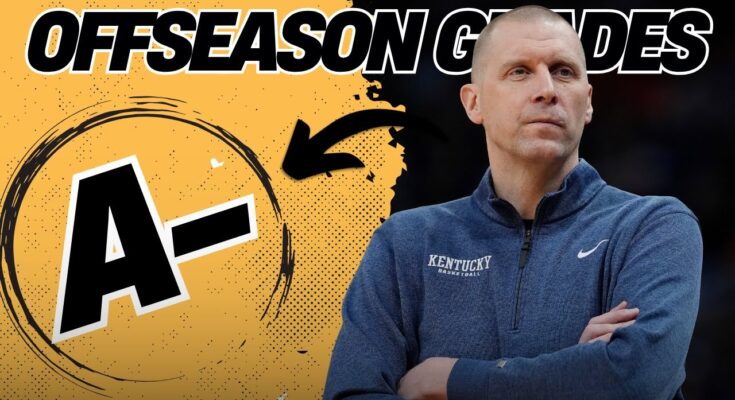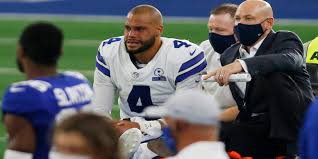Reece Potter: ‘We’ve Probably Got the Deepest Roster in the Country’ — Kentucky’s Wildcats Building a Title Contender Through Unmatched Depth
Mark Pope’s Kentucky Wildcats are making headlines, and not just for their on-court performance. Following a transformational offseason driven by the transfer portal and a wave of new talent, one vocal newcomer—Reece Potter—went public with a bold declaration: “One through fifteen guys, everybody can probably play anywhere in the country.” He firmly backed up that claim, stating, “We always say we’re the deepest team in the country.” For Potter, a Lexington native and former Miami (Ohio) transfer, this is more than just talk—it is a promise. And if the numbers and expert analysis are any evidence, this Wildcats squad may genuinely rank among the deepest in college basketball history
The foundation of this pre-season narrative is simple: depth. Kentucky has weaponized the NCAA transfer portal with remarkable success. Head coach Mark Pope, in only his second year, assembled a rebuilt team that looks nothing like what it did under John Calipari. Gone are the days of one-and-done recruiting pipelines; instead, Pope has crafted a roster where the top eight or nine contributors are transfers from other Division I programs. In fact, the 2024–25 squad featured nine transfers and just one freshman in its primary rotation
That stamp of experience shows everywhere you look—from the backcourt to the paint. Players like guard Jaland Lowe from Pittsburgh and wing Otega Oweh from Oklahoma bring SEC-caliber experience and scoring punch. Add in interior presences like Mouhamed Dioubate (Alabama), Jayden Quaintance (Arizona State), and versatile forward Kam Williams (Tulane)—and the size and athleticism become undeniable.
This depth isn’t just theoretical—it has been recognized by preseason analysts. RotoWire sees Kentucky at No. 4 nationally, praising Pope’s handling of the portal and roster balance. Sports Illustrated ranks them seventh, specifically noting “a deep and versatile roster… excitement is building” across the fanbase. USA Today slots them 14th—perhaps conservative, given concerns about Quentinance’s rehab—but still stresses the strength of Kentucky’s multi-layered lineup
Expert voices support the hype. TJ Walker, who covers UK’s program, claims this may be “the deepest team in the history of the program,” even when compared to the iconic 2015 and 1996 squads. And in mid-February SEC projections, analysts echoed that sentiment: Kentucky boasts “arguably the deepest and most balanced roster in America”
Why does depth matter? As college hoops shifts toward platoon systems and relentless frontcourt substitutions, having 12–13 players who can start somewhere in the country is a game changer. Coach Pope can rotate fresh legs, tailor matchups, and protect against foul trouble or injury—all while maintaining a high level of play. It also ignites intense competitiveness in practice, driving each player to fight for court time, sharpening the group both mentally and physically.
The roster reflects both seasoned transfers and high-upside newcomers. Potter, a 7‑foot center, along with Malachi Moreno and Jasper Johnson, bring size, skill, and two-way potential. On the wing, players like Williams—who can guard multiple positions and shoot from the perimeter—and Oweh are expected to anchor the team on both ends of the floor. Defensively, the mix is formidable: Quaintance, Dioubate, and Moreno provide rim protection and unmatched versatility upfront
This dynamic strength is noted by neutral observers too. USA Today’s Way‑Too‑Early poll, despite placing Kentucky 14th, pointed out the team’s SEC contention hinges on returning Oweh and the full return of Quaintance. And analysts at Sporting News outlined how Pope rebuilt the entire 2024–25 squad via transfers—establishing nine new contributors in the rotation, effectively creating an entirely new team
How does this stack up with history’s best Kentucky rosters? Comparisons to the vaunted 2015 team—led by Towns, Cauley‑Stein, Booker, and Ulis—suggest while that squad was top-heavy with NBA talent, they relied heavily on a six‑man rotation. The 1996 team, coached by Rick Pitino and crowned national champions, had nine elite contributors—but still lacked the positional balance and rotational flexibility of today’s roster. In contrast, Pope’s 2025–26 roster offers a truly interchangeable 12‑13‑man lineup where every player can meaningfully contribute.
Is that enough for a championship? History says roster balance and depth give teams a solid shot at deep tournament runs—and Kentucky fans will remember that 2015’s two‑unit strategy nearly delivered a perfect season. But depth alone won’t win games; chemistry, health, and cohesion under pressure must follow suit. Fortunately for Pope, competitive practice, veteran leadership, and a shared goal of delivering Kentucky’s ninth national title suggest those boxes are being checked
Potter put it clearly: “Every single day, it’s a challenge… Everybody is trying to bring it fighting for spots.” He also predicted, with confidence, “We’re gonna be the best defensive team in the country,” noting that any one of the roster players could be the SEC’s Defensive Player of the Year. That’s a remarkable statement—and one that would mean Kentucky isn’t just deep, they’re elite on both ends of the floor.
So how will success be measured? A few key benchmarks to watch:
-
The evolution of a true ten‑plus‑man rotation during the regular season—will Pope lean on depth or harden into a more traditional five‑man core?
-
The health and impact of recovered big man Jayden Quaintance, whose full return would bolster rim defense immensely
-
Whether elite newcomers like Williams, Johnson, and Moreno can quickly adapt to the college game and deliver meaningful minutes.
-
Intangibles like locker‑room unity, as Kentuckians and newcomers adjust to each other under the pressure of national expectations.
In a college basketball landscape redefined by the transfer era, Mark Pope’s Kentucky is embracing the new model: build through experience, create positional flexibility, and press depth as a strategic advantage. It’s not just talk—it’s blueprint. If they remain healthy, focused, and cohesive, this team could transform depth into dominance.
Reece Potter’s declaration echoes loudly now, but come April, a plaque or banner—or heartbreak—will be the final proof. The question now isn’t whether Kentucky has the deepest roster—they do—but whether that depth can stretch all the way to a national title.



